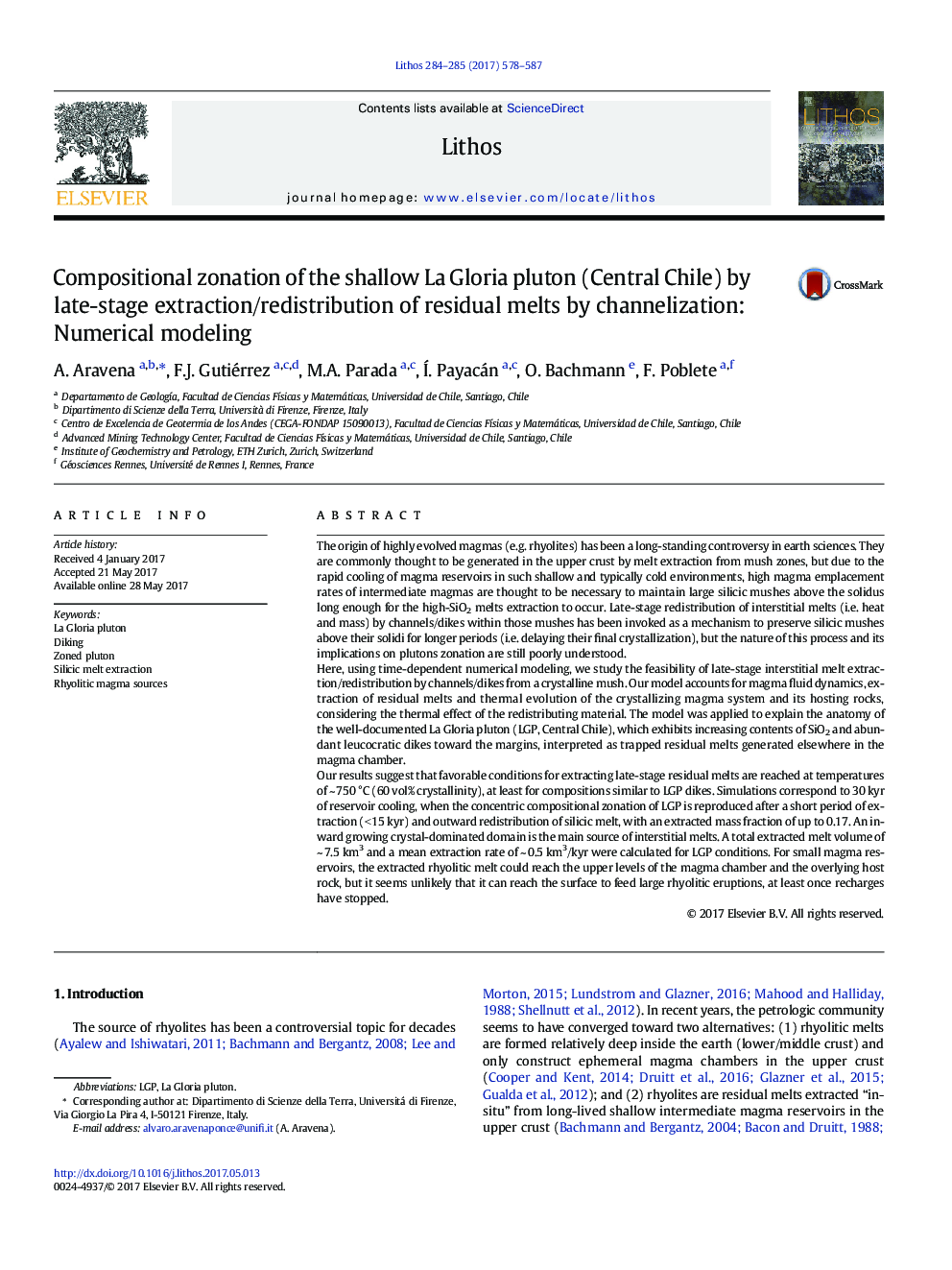| کد مقاله | کد نشریه | سال انتشار | مقاله انگلیسی | نسخه تمام متن |
|---|---|---|---|---|
| 5784059 | 1638630 | 2017 | 10 صفحه PDF | دانلود رایگان |

- Numerical simulation of the magma chamber evolution using the finite element method
- Dikes within the pluton as paths of extracted/redistributed rhyolitic magma
- Estimation of favorable conditions for silicic magma extraction from a locked mush
- Geochemical zonation of a pluton produced by late-stage extraction of silicic magma
The origin of highly evolved magmas (e.g. rhyolites) has been a long-standing controversy in earth sciences. They are commonly thought to be generated in the upper crust by melt extraction from mush zones, but due to the rapid cooling of magma reservoirs in such shallow and typically cold environments, high magma emplacement rates of intermediate magmas are thought to be necessary to maintain large silicic mushes above the solidus long enough for the high-SiO2 melts extraction to occur. Late-stage redistribution of interstitial melts (i.e. heat and mass) by channels/dikes within those mushes has been invoked as a mechanism to preserve silicic mushes above their solidi for longer periods (i.e. delaying their final crystallization), but the nature of this process and its implications on plutons zonation are still poorly understood.Here, using time-dependent numerical modeling, we study the feasibility of late-stage interstitial melt extraction/redistribution by channels/dikes from a crystalline mush. Our model accounts for magma fluid dynamics, extraction of residual melts and thermal evolution of the crystallizing magma system and its hosting rocks, considering the thermal effect of the redistributing material. The model was applied to explain the anatomy of the well-documented La Gloria pluton (LGP, Central Chile), which exhibits increasing contents of SiO2 and abundant leucocratic dikes toward the margins, interpreted as trapped residual melts generated elsewhere in the magma chamber.Our results suggest that favorable conditions for extracting late-stage residual melts are reached at temperatures of ~ 750 °C (60 vol% crystallinity), at least for compositions similar to LGP dikes. Simulations correspond to 30 kyr of reservoir cooling, when the concentric compositional zonation of LGP is reproduced after a short period of extraction (< 15 kyr) and outward redistribution of silicic melt, with an extracted mass fraction of up to 0.17. An inward growing crystal-dominated domain is the main source of interstitial melts. A total extracted melt volume of ~ 7.5 km3 and a mean extraction rate of ~ 0.5 km3/kyr were calculated for LGP conditions. For small magma reservoirs, the extracted rhyolitic melt could reach the upper levels of the magma chamber and the overlying host rock, but it seems unlikely that it can reach the surface to feed large rhyolitic eruptions, at least once recharges have stopped.
Journal: Lithos - Volumes 284â285, July 2017, Pages 578-587